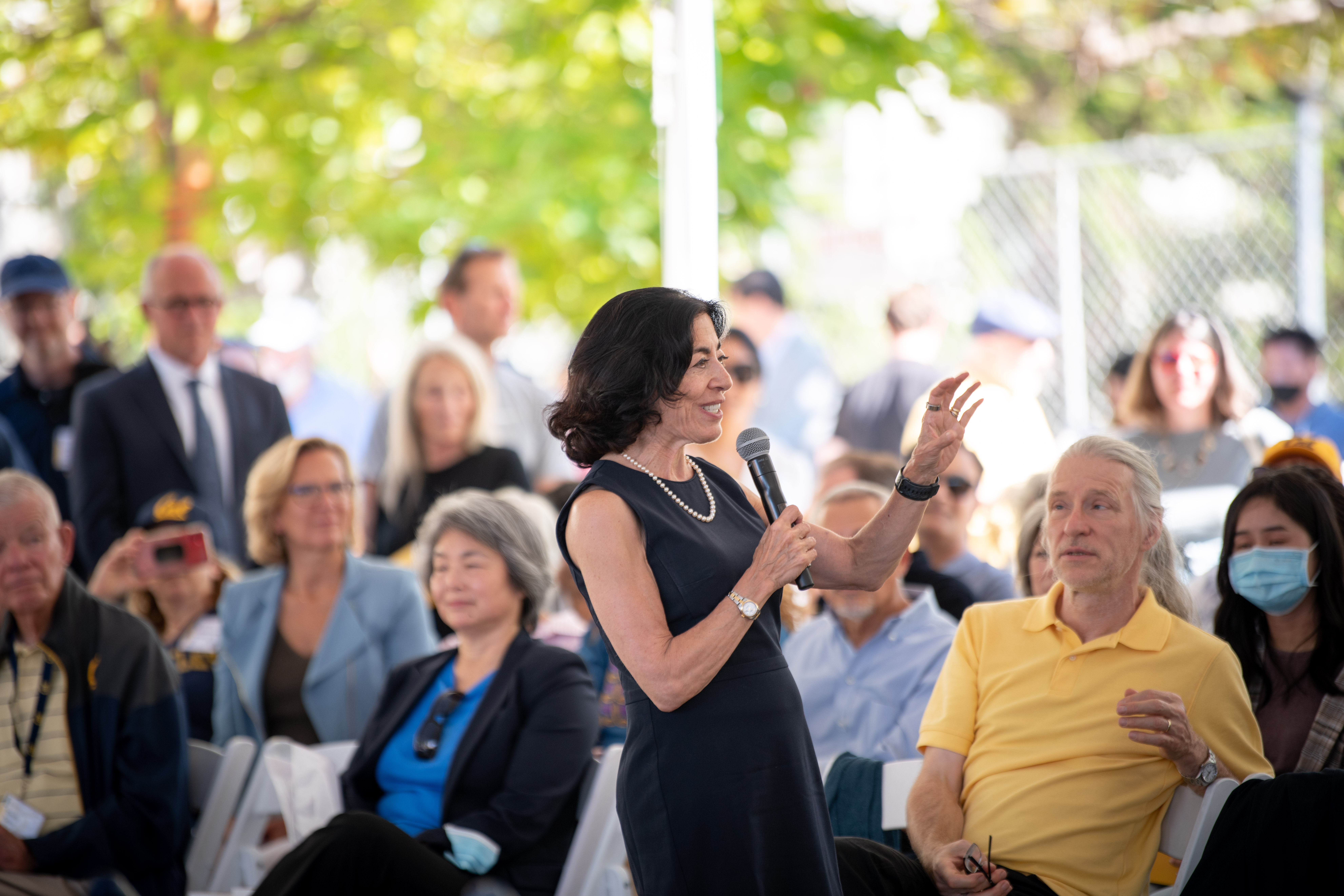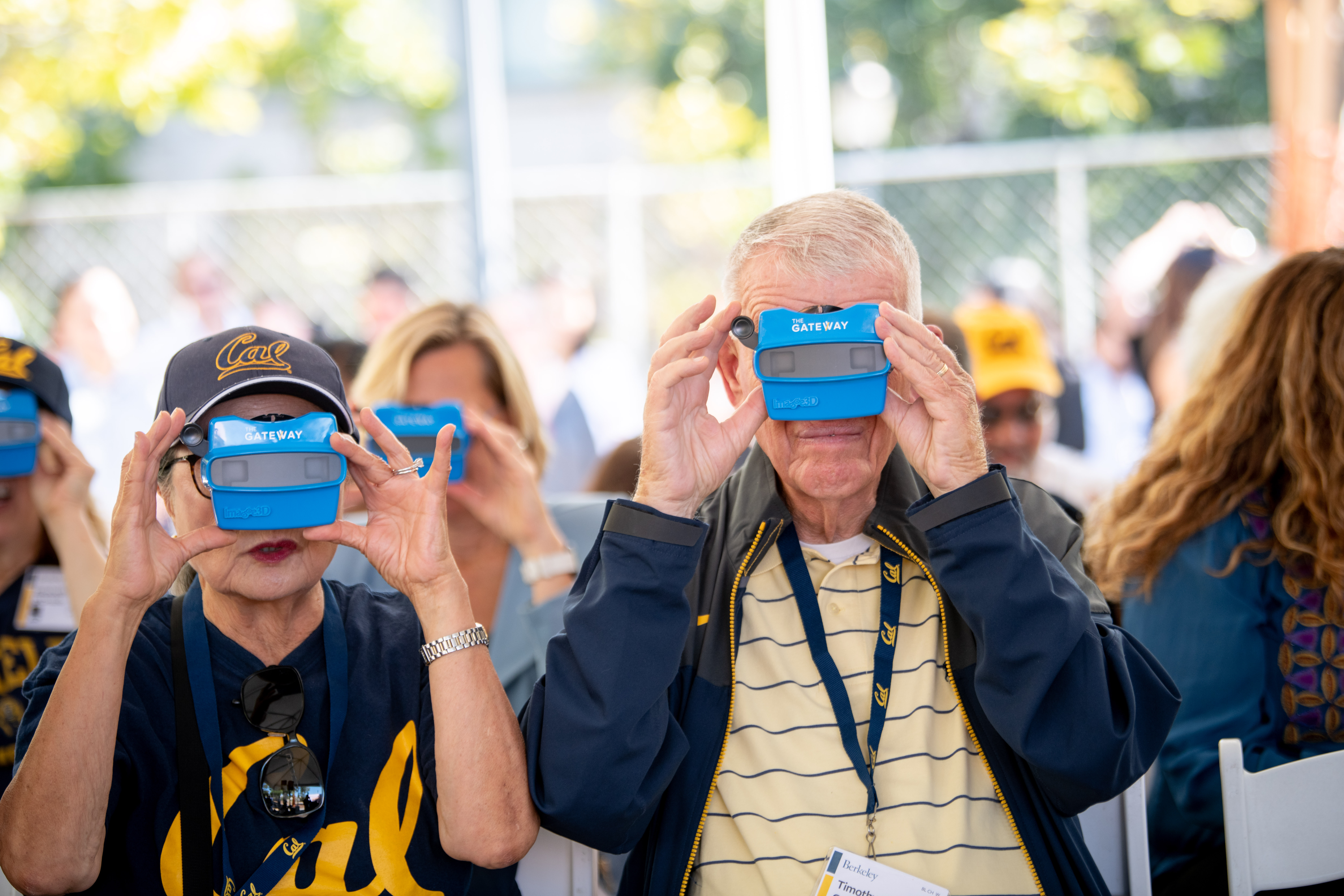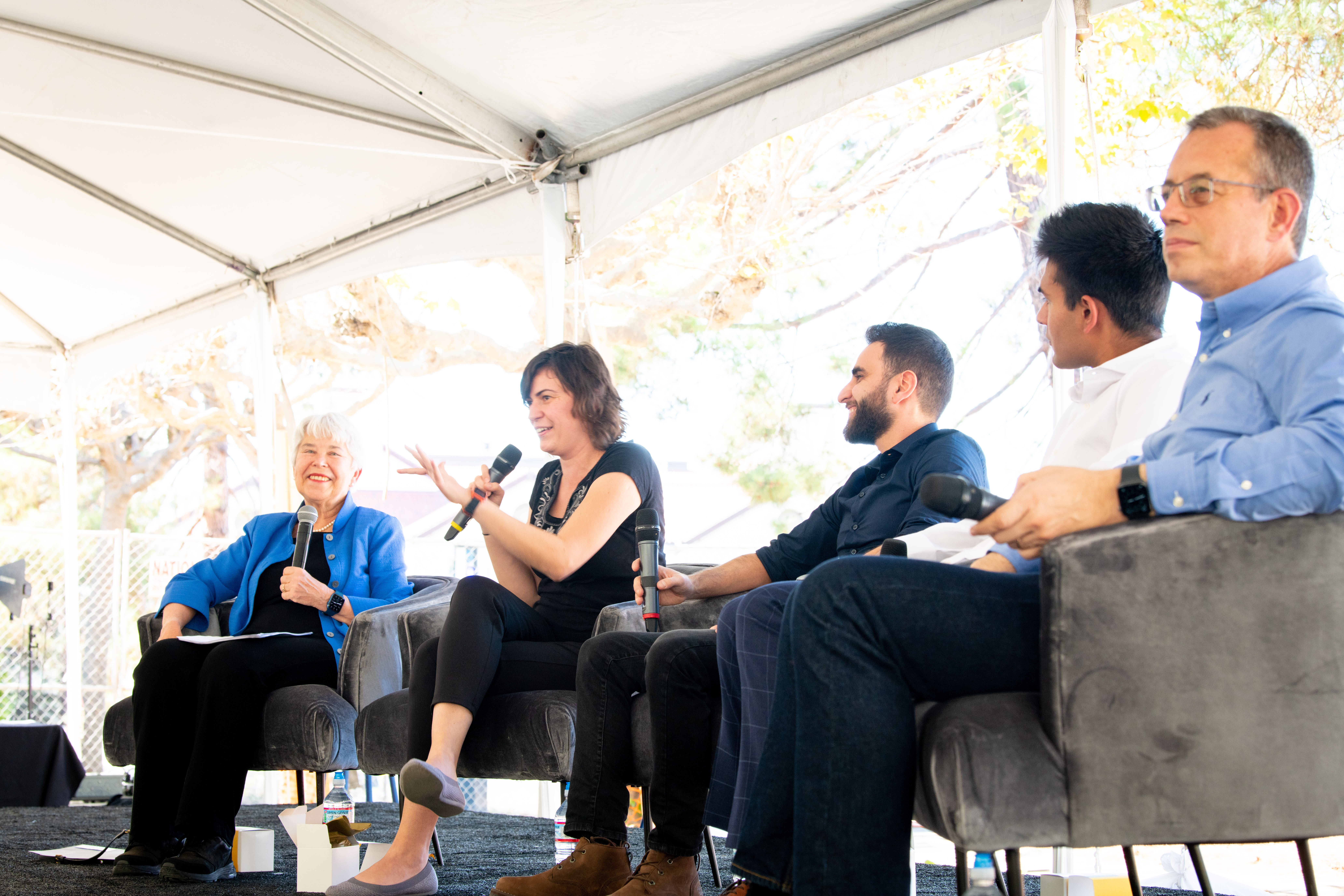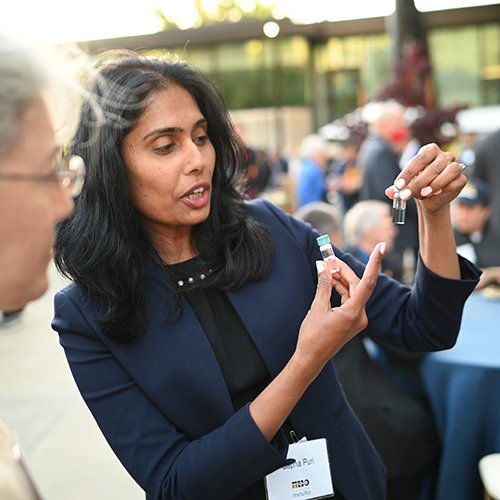Chancellor Christ noted that Berkeley has raised $5.9 billion in philanthropic support toward the campaign goal with a year and a half to go and looks forward to announcing additional significant gifts in the coming months. An anonymous donor contributed $252 million in 2020 — the second largest gift in the university’s history — to seed construction for the Gateway, which is slated to open during the 2025-26 academic year. Throughout construction, Berkeley will continue to pursue gifts from those who support providing all students with opportunities in computing and data science education, while creating a home for data-driven research on the world’s most urgent problems.
Jennifer Chayes, associate provost for the College of Computing, Data Science, and Society and dean of the School of Information, and Tsu-Jae King Liu, dean of the College of Engineering, provided examples of how the Gateway would catalyze collaborative research and education. They stressed the need for such approaches to respond to societal challenges, including climate change, advances in health and biomedicine, and issues in human welfare and social justice.

Jennifer Chayes, associate provost of the College of Computing, Data Science, and Society, and dean of the School of Information, speaks during the Gateway groundbreaking. Photo by Keegan Houser.
Designing an innovative nexus for computing and data science
The Gateway’s name is meant to both welcome diverse perspectives and areas of expertise and reference the building’s location at the north edge of the Berkeley campus where Hearst Avenue meets Arch Street. This dual role as a physical and intellectual gateway inspired the award-winning architecture firm Weiss/Manfredi, in collaboration with Gensler of San Francisco, to develop plans for the campus’s first post-pandemic building, offering inventive, flexible environments for more than 1,300 faculty, students and staff to research, learn and collaborate across disciplines.
The architects took a holistic approach to design excellence and environmental performance. Many in the Berkeley community provided insights and feedback throughout the design process, including Fernando Pérez, associate professor of statistics at Berkeley and creator of the IPython programming environment, who attended the groundbreaking ceremony.
Pérez believes the Gateway will be a landmark — not only for campus, but also for the city of Berkeley. He noted that the tiling in the facade and the shape of the roof help the building blend with the slope of the hillside. “I feel the architectural design captured very well a balance between the ethos of computation and science, the aesthetics of nature and the sense of human community,” he said.

Guests received commemorative ViewMasters with renderings of the Gateway. Photo by Keegan Houser.
“What he wants to do is pour himself a glass of water and drink it, and what we’d love to be able to empower for him … is the ability to think and have a robotic arm move as an extension of his body.” — Professor Anca Dragan, describing a patient with quadriplegia
Fostering interdisciplinary collaboration
The chancellor moderated a panel discussion focused on the Gateway’s aim of fostering interdisciplinary collaboration. Berkeley participants included Anca Dragan and Ion Stoica, professors in the Department of Electrical Engineering and Computer Sciences, computer science graduate student Seri Khoury, and undergraduate Nitesh Nagpal, who studies economics and data science and serves as the academic and professional opportunities executive at the Associated Students of the University of California.
“It’s not only about data, it’s what you’re going to do with the data,” said Stoica, adding that society is only beginning to see the impact of big data in many fields. An entrepreneur, Stoica cofounded the software company Databricks and contributed $25 million last year to support construction of the Gateway and two new full-time faculty positions in computer science.
One project Dragan hopes to continue pursuing in the Gateway’s new robotics lab involves brain-machine interfaces in collaboration with the Department of Neurology at UC San Francisco. She described a patient with quadriplegia who received an electrode array implanted in his motor cortex. “What he wants to do is pour himself a glass of water and drink it,” she said. “And what we’d love to be able to empower for him — not next year, but down the line — is the ability to think and have a robotic arm move as an extension of his body.”
Khoury focuses on theoretical computer science, including network analysis and network algorithms. He is likewise drawn to the intersection of neurology and computer science, and he believes the Gateway will create the right conditions for contributing to such cutting-edge research. “When you want to solve a multi-disciplinary, open question, you either need to be an expert in all areas involved, which is very hard, especially when you’re a Ph.D. student, or you need to have constant access to experts from these other areas,” he explained.
Creating a resource for all undergraduates
Nagpal said the Gateway would respond to growing interest in data science from undergraduates across campus. “Data has become so influential in the modeling industry that almost every major, every student — whether that’s biology, public health, engineering, or even economics — they need these data techniques to really work and enter the industry,” he said.
Undergraduates Ramisha Kabir, Ciara Acosta, and Nicole Park attended the event and echoed Nagpal’s sentiments. Kabir is interested in applying computing and data science to challenges related to diversity, equity, and inclusion. “One thing we struggle with is giving more people opportunities because there’s so many of us, and data science is still a growing program,” said Kabir.
Acosta works with Data Scholars, a program that strives to remove barriers of entry to data science for students underrepresented in STEM fields. She emphasized the importance of physical spaces to gather and connect and is excited the Gateway will provide that kind of welcome for future generations of data science students.
“It really does solidify that data science is making its mark on this campus,” added Park.

Chancellor Christ moderated a panel discussion with Professor Anca Dragan, graduate student Seri Khoury, undergraduate Nitesh Nagpal, and Professor Ion Stoica. Photo by Keegan Houser.
Realizing the vision for Computing, Data Science, and Society
When it opens, the Gateway will become the new home of Computing, Data Science, and Society (CDSS), said Chayes in her remarks. The formal process of transforming the division into a college was initiated in 2020 and completed in 2023. CDSS is the first new college or school on the Berkeley campus in more than 50 years.
The college aims to create equitable and accessible educational opportunities and to foster groundbreaking research in computing and data science that will advance the greater good, said Chayes.
The Gateway represents an embrace of interdisciplinary dialogue, but the vision for the Gateway and CDSS is even more expansive, said Pérez. He sees both as creating an intersection of intellectual cultures that will lead to a broader spectrum of output than traditional academic collaborations. He suggested that these diverse outputs might include community engagement models, software platforms, sensors and companies.
Pérez said that many of his students don’t necessarily see themselves pursuing academia, but they are keenly aware of opportunities to make an impact — for example, by advancing social justice or finding ways to protect the environment. He added, “Changing society is really the mission, and that requires levels of collaboration and interaction that a building can help catalyze. A building can help sustain and spark those interactions.”
For information on opportunities to support the Gateway, please contact Kristen Williams, interim chief development officer at CDSS.




